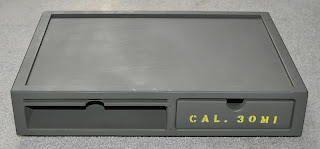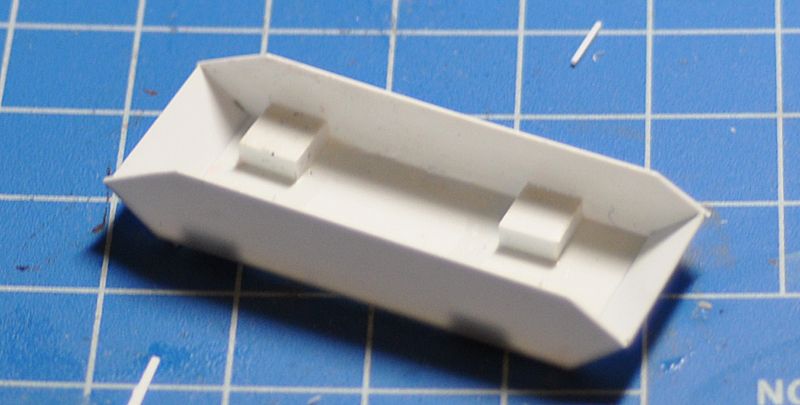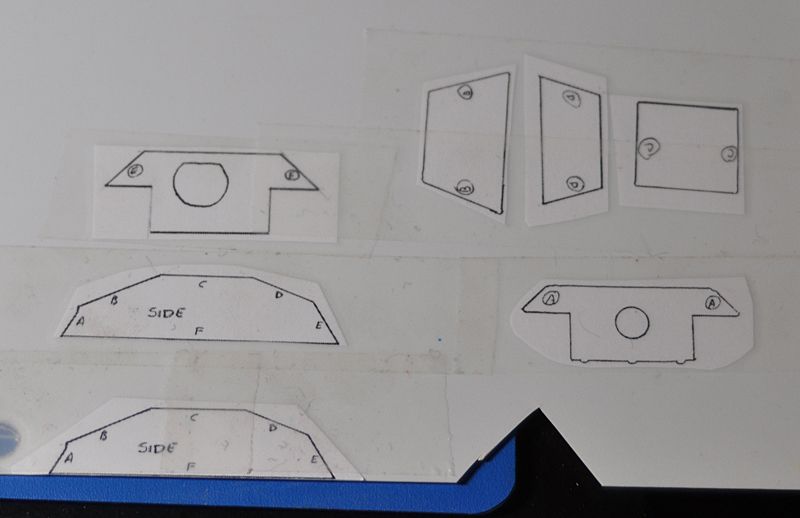The new pewter alloys differed from the older high lead
content miniatures in two important ways.
The metal was harder and therefore more difficult to clean up any
casting flaws and mold lines. The metal
was also more expensive than the older alloys leading to across the board price
increases for miniatures. Largely
because of the later issue, manufacturers began to experiment more with alternate
materials for miniatures.
Companies like Battlefront, while still using metal for
their small scale figures, began to use a mix of polyurethane resins and white
metal for their vehicles. The casting technology
for resin is similar in many ways to metal, but resin is generally
cheaper. Plastic (both soft and hard)
had been used for decades in certain scales for miniatures, but the quality of
the plastic miniatures was almost universally inferior when compared to their
metal counterparts. One notable
exception would be plastic vehicles from companies like Citadel which
essentially used the same injection molding techniques and design used in scale
model kits.
As the new century dawned, Citadel began to move away
from metal all together and now use plastic not only for their vehicles, but
their 28mm miniatures as well. They have
a "finecast" range that is now, interestingly, resin rather than
metal. At the smaller scales like 15mm,
however, metal and resin still ruled. The
release of the Flames of War caused a surge in demand for 15mm miniatures and
vehicles which had to that point been a fairly fragmented market.
With the increase in popularity of the 15mm scale, it was
only a matter of time before new technology would be brought to bear into the
market. The primary drawback of
injection molded plastic is that it has a very high up-front cost. Creation of the molds for the kit sprues is
expensive, and to get good detail, complex (and even more expensive) sliding
molds are frequently required. However,
once the mold is created, a plastic miniature or vehicle is cheaper than its
metal and/or resin counterpart. Companies
like Zvezda and Plastic Soldier Company brought plastic to 15mm figures and
vehicles in a major way.
Recognizing the competitive threat, Battlefront had
already started to dip its toe into injection molded plastic with the tracks
for their Sherman and Sd Kfz 251 halftracks.
These were followed by the "Open Fire" boxed set featuring
decent plastic infantry, but the vehicles and anti-tank guns were a bit of a
mixed bag. Since then Battlefront has
continued to release plastic parts and kits.
Some have been excellent (the Panther tracks, T-34 kit, M113 kit, Sd Kfz
251 D) while others have had serious accuracy issues (Panzer IV J tracks, the
Panzer IV H kit).
The transition to plastic has not been without
controversy. Some people prefer the
weight of the older metal and resin miniatures.
Others prefer the detailing possible with plastic vehicles. Given the cost of setting up injection molds,
only high volume SKU's are good candidates for conversion to plastic, which
means that resin and metal are unlikely to completely go away in the near
future at 15mm scale. Resin and metal
are still going to be cheaper to set up, and can in certain circumstances still
offer detailing as good or better than plastic.
I personally like plastic for vehicles simply because it
makes assembly and conversion easier, and as any reader of this blog
understands I LOVE to do conversions. I
still have mixed feelings on the plastic figures at this point. Some seem to have excellent detail, while
others (like the tripod for the mortar in the open fire set) are crudely
simplified.
So what are your thoughts on plastic vs. metal/resin
miniatures? Post in the comments below!















